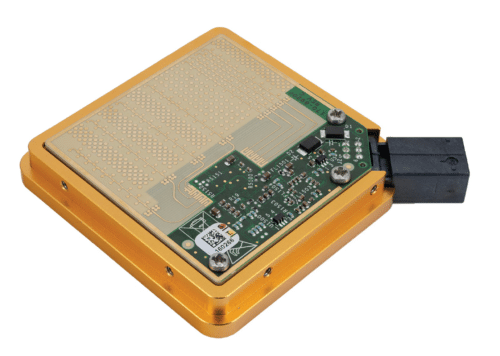The design features a high-performance SoC with advanced processing capabilities for enhanced vehicle safety applications, including automatic cruise control and obstacle detection.

Radar (Radio Detection and Ranging) is a crucial technology that uses radio waves to detect, track, and measure objects’ distance, speed, and direction. Its ability to operate in various environmental conditions, including darkness, fog, rain, or dust, makes it indispensable in aviation, automotive safety, military defence, weather forecasting, and space exploration. From guiding aircraft and autonomous vehicles to tracking severe weather and securing national defence, radar is vital in enhancing safety, accuracy, and efficiency across numerous industries. The Pluto radar sensor reference design by NXP features the SAF8544, a 28nm single-chip radar SoC with four transmitters and four receivers, delivering high RF performance and the flexibility needed for corner and front radar applications.
The radar SoC integrates multiple processor cores and hardware accelerators to enhance radar processing, enabling the sensor to output FFT data, point clouds, or tracked objects. The Pluto sensor reference design includes the TJA1120 Gigabit Ethernet PHY for high-speed data streaming to external devices and the PF51 PMIC, optimised for radar applications. The compact design measures approximately 6 x 6 cm and includes a patch antenna. It allows customers to evaluate SoC’s edge and hybrid architecture capabilities, speeding up product development.
The design’s target applications include automatic cruise control, autonomous emergency braking, blind spot detection, front cross-traffic alert, and rear cross-traffic alert. These systems enhance vehicle safety and driving assistance by detecting obstacles, other vehicles, and potential hazards, allowing for timely responses and improved driving decisions.
The key features of the radar sensor include a compact PCB size of 50 x 50 mm and a sensor size of 60 x 60 x 35 mm. It offers a complete reference design with an integrated PMIC and Ethernet PHY. The sensor supports a 4-transmitter and 4-receiver antenna configuration, enabling up to 4 x 4 MIMO (Multiple Input Multiple Output). It can detect objects at distances greater than 200 metres and supports raw data capture for enhanced radar processing and analysis.
This radar solution offers benefits such as a ready-to-use reference design that allows for faster product development. Companies can significantly reduce their time to market by reusing the provided schematics and hardware design. Additionally, the platform serves as a robust foundation for radar software development, streamlining the overall development process.
NXP has tested this reference design. It comes with a bill of materials (BOM), schematics, assembly drawing, printed circuit board (PCB) layout, and more. The company’s website has additional data about the reference design. To read more about this reference design, click here.









